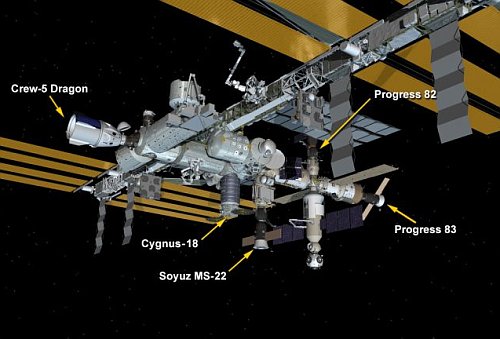Winter finally ends for Ingenuity
According to a detailed update today by Travis Brown, Chief Engineer of the Mars helicopter Ingenuity, the helicopter has now finally exited its difficult winter conditions that began in May 2022 and only ended at the end of January 2023.
One month to the day after the Dec. 24 flight attempt, Ingenuity did something it hadn’t done during the previous 260 sols – it slept “warmly” through the entire night. Data leading up to this event had suggested that such a survival was possible, but 8 long months of winter had tempered the team’s optimism. When Ingenuity’s team reviewed the downlinked data, they found that not only had it started living through the night, but had actually begun to bank power in its batteries. We’ve now seen end-of-sol states of charge in our batteries of more than 90% — an unbelievable number just days earlier. All the above means our sleepy friend has finally awoken from its long winter malaise, just in time to race up the Jezero Crater Delta and provide valuable advanced imaging for Perseverance.
Brown describes in detail their struggle for the past eight months to keep Ingenuity alive. That information is going to be crucial in designing future Mars helicopters, including the ones that will return to Jezero Crater sometime in the next decade to grab the core samples Perseverance has deposited for pick up and return to Earth.
According to a detailed update today by Travis Brown, Chief Engineer of the Mars helicopter Ingenuity, the helicopter has now finally exited its difficult winter conditions that began in May 2022 and only ended at the end of January 2023.
One month to the day after the Dec. 24 flight attempt, Ingenuity did something it hadn’t done during the previous 260 sols – it slept “warmly” through the entire night. Data leading up to this event had suggested that such a survival was possible, but 8 long months of winter had tempered the team’s optimism. When Ingenuity’s team reviewed the downlinked data, they found that not only had it started living through the night, but had actually begun to bank power in its batteries. We’ve now seen end-of-sol states of charge in our batteries of more than 90% — an unbelievable number just days earlier. All the above means our sleepy friend has finally awoken from its long winter malaise, just in time to race up the Jezero Crater Delta and provide valuable advanced imaging for Perseverance.
Brown describes in detail their struggle for the past eight months to keep Ingenuity alive. That information is going to be crucial in designing future Mars helicopters, including the ones that will return to Jezero Crater sometime in the next decade to grab the core samples Perseverance has deposited for pick up and return to Earth.










